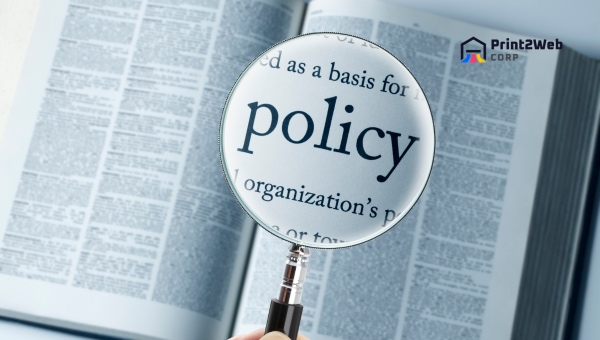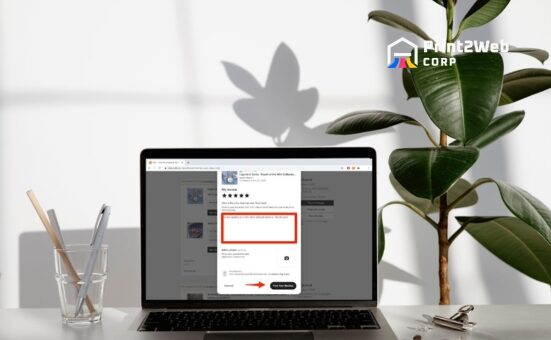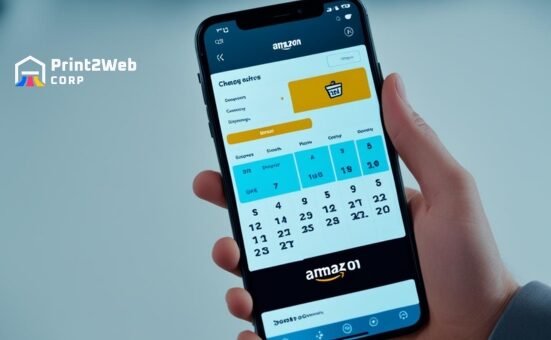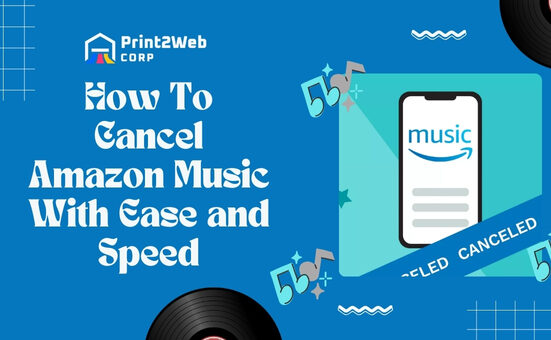Ever wondered about the Amazon Price Match Policy? It’s the thing that can either make or break your shopping experience. When you think you’ve found a deal online, only to see it for less somewhere else, that feeling isn’t great. But guess what? Today, I’m peeling back the curtain to show you how you can play the game of savings with Amazon. What if I tell you there are ways to save money even if price matching isn’t exactly what it seems? Stick around — I promise this will change your shopping game!
So, does Amazon offer a price match guarantee? Here’s what you need to know: Currently, Amazon doesn’t offer a traditional price match policy. However, don’t let this stop you from finding deals! They have other tricks up their sleeve, like dynamic pricing and various saving strategies that can help you snag a bargain.
What You’ll Discover Around Here
- A deep dive into Amazon’s hidden saving hacks
- The inside scoop on how other big retailers stack up against Amazon
- Surprising benefits of Prime Membership that save more than just shipping costs
- Smart approaches to secure cash backs and score credits
- Tried and true shopping strategies for guaranteed discounts
Unpacking the Amazon Price Match Policy
Before we dive into other aspects of Amazon’s pricing, let’s first dissect the ‘Amazon Price Match Policy’. Grabbing a discount is always an attractive prospect, and price matching could be your ticket to some impressive savings.

Does Amazon Offer Price Matching?
As an avid online shopper, I’ve always kept my eye on policies that can help me get the best deal. So naturally, I’m drawn towards understanding whether Amazon has any mechanism in place for price matching. So here’s the catch – Amazon does not offer traditional price matching. This means if I find an identical item at a lower cost elsewhere after my purchase on Amazon, unfortunately, there won’t be any scope for a refund of the difference.
But it doesn’t end here; don’t completely cross out getting that best deal yet! While they may not have a dedicated policy for price-matching post-purchase as some other retailers do, you’ll find that they are decisively competitive when it comes to their initial pricing!
Understanding the ‘Tell Us About A Lower Price’ Feature
Now, while browsing through products on Amazon itself, have you ever spotted something called ‘Tell Us About a Lower Price’? It’s just below the Product Details section and quite easy to miss out on if one isn’t observant enough!
This feature cuddles into its algorithm as part of its efforts to remain competitive. It allows customers like me to give feedback about finding a better offer elsewhere – maybe another website or even an offline store! Here’s how we can use this feature effectively:
- Click on ‘Tell Us About a Lower Price’.
- Include details: You’ll need to mention where did you find this product cheaper – was it online or in-store?
- Submit: After filling in all necessary information, just click submit!
We won’t get an instant markdown, but remember, every input counts. Amazon uses this feedback for future price reviews—so we might be gifting ourselves a better deal next time we buy the same product!
So, even though there isn’t an official ‘Amazon Price Match Policy,’ there are still ways to make sure you’re getting the best prices on this goliath of internet shopping! Let’s dig a little deeper and see how it compares with other retailers.
Also Read: Landscaping Business Startup Guide: Create Your Success
Exploring Other Retailers’ Policies
Shoppers are often curious about other retailers’ pricing policies, especially when these businesses can potentially offer a better deal. Let’s dive into the price match policies of Target, Walmart, Best Buy, and Home Depot and see how they stack up against Amazon’s policy.

Does Target Price Match with Amazon?
Let me take you on a journey to unravel the mysteries of Target’s price-matching policy. Is Amazon on their list? Simply put—yes! If you find an identical item touted for a lower cost on Amazon (excluding third-party sellers), Target will match it. Here’s how it works:
- Find the exact same product at Target but cheaper on Amazon.
- Just validate it with customer service at Target, either in-store or online.
- Important to note: this is only valid within seven days of purchase.
Not bad, right? Keep reading for more comparisons.
How Walmart Stands in Terms of Matching Prices with Amazon
The question some might have is: How does behemoth Walmart fare in terms of matching prices with retail titan Amazon? In truth, Walmart discontinued its general ad-matching initiative in May 2020. They now rely solely on their own price scanning tool called the Savings Catcher app to ensure you’re getting the best possible deal. However, despite dropping their official Price Match Policy, there have been varied reports from consumers that some local stores still honor price matches upon request.
The Scenario of Best Buy’s Price Matching with Amazon
Now, we venture forth into Best Buy’s realm. Like Target, Best Buy also adopts a competitive stance against competitor prices—even those presented by mighty Amazon! Suppose you find a lower rate for a similar item at qualifying competitors (specifically including online-only retailers like our focus—Amazon). In that case, Best Buy’s “Price Match Guarantee” comes into action:
- You simply need to approach Best Buy at the time of purchase or within the return/exchange period with proof of a lower price.
- There are specific exclusions, including contract mobile phones sold by any online retailer, products shipped from or sold by third-party vendors on Amazon Marketplace, etc.
What about Home Depot? Let’s check it!
Home Depot vs. The Reigning Champion, ‘Amazon’
Last but not least is our beloved hardware hotspot—The Home Depot. Unfortunately for bargain hunters, Home Depot’s policy doesn’t extend to matching prices from online-only retailers like Amazon. So, while they do match their in-store prices with those of local retail competitors (including their online prices), they do not specifically match prices at Amazon.
Conclusively, each store has its unique approach when it comes to challenging the Goliath that is Amazon. Some directly compare and compete, while others choose different paths to entice customers and ensure their satisfaction.
Also Read: How to Check Amazon Gift Card Balance? – Quick, Easy Guide!
Making Every Penny Count – Skimming Through Options to Bask in Savings
Navigating the Amazon Price Match Policy and understanding savings strategies involve simple solutions, like becoming a Prime member or using unique features to your advantage.

By making informed decisions, you could stretch every dollar just a bit further for your next purchase.
Prime Membership Perks
One of the first strategic moves I recommend is subscribing to Amazon Prime. Besides granting you access to a barrage of movies and TV shows, it’s also an absolute treasure chest when it comes to savings!
- Free Trials: If you’re new to Amazon or haven’t tried out Prime yet, make use of the free trial period. Don’t miss out on any potential savings before you commit.
- Exclusive Deals: As a Prime member, I get early access deals that others simply don’t have. It’s like having my own personal sale event at times!
- Shipping Benefits: Free two-day shipping? Yes, please! And that’s not all – some locations even offer free same-day delivery.
- Prime Day: This is an exclusive event where hundreds of items are discounted for Prime members.
It’s easy to see how an upgraded membership can mean hefty savings!
Understanding Cash Backs & Credits
Another tool at my disposal when shopping on Amazon is my credit card rewards program and cashback benefits. Amazon provides attractive cashback offers through their Amazon Rewards Visa Card and Amazon Store Card, which aid both prime and non-prime members with several benefits like:
- Earning up to 5% back on purchases made from amazon.com
- Getting 2% back from restaurants, gas stations and drugstores
- Receiving 1% back on other purchases
I find this feature extremely useful as it provides another avenue for saving!
Showcasing Shopping Strategies
I adopt a myriad of strategies while shopping online at Amazon. Here are some I’ve found particularly useful:
- Qualifying Discount Memberships: Amazon has price cuts for specific groups, like students or EBT cardholders, allowing you to tap into additional savings.
- Limited-time deals: Keep tabs on daily deals or lightning offers that grant jaw-dropping discounts.
- Outlet Shopping: A lesser-known goldmine! This is where markdowns and overstocked goods are stashed away.
Combining these strategies will certainly amplify your savings!
Converting Coins Into Gift Cards!
Did you know the change loitering around in your home could end up benefiting you while shopping? With Amazon’s Coinstar feature, I just dump my unneeded coins, and voila – it serves me a no-fee eGift Card. Surely, it’s a win-win situation!
Seeking Savings with No-Rush Shipping
When I’m not in a hurry to receive an item, another incredible saving tactic I employ is selecting No-Rush Shipping at checkout. This way, I earn rewards for future purchases.
In summary, understanding the full scope of Amazon’s Price Match Policy allows me to utilize resources effectively for maximum savings. The tips mentioned above are just some of the ways that have helped me save costs when shopping with Amazon. Happy Savings!
Also Read: eBay Vacation Mode: Navigate Selling While Away!
Relying on Consistency in Costs – Monitoring & Balancing Price Fluctuations
Shopping online, especially on platforms like Amazon, can be a dynamic experience. Prices fluctuate often, and it’s hard to keep track but rest assured, there are effective ways to deal with this kind of market movement.

Two key tools that I’d recommend are CamelCamelCamel and Keepa.
Tracking Trends With CamelCamelCamel
First off, let me introduce you to CamelCamelCamel. This is an ingenious free tool that tracks the prices of items sold on Amazon. It essentially offers the following benefits:
- Price Drop Alerts: This feature allows you to set a desired price for any product on Amazon. As soon as it hits your target price or goes lower, Camel will notify you via email. A great way to snag deals!
- Price History Charts: This function gives you access to detailed charts illustrating the price variation of any product in various timeframes – on a daily, weekly, or monthly basis.
Imagine knowing when an item costs its lowest and highest! That would give anyone good purchasing prowess.
Knowing the best time not only helps me save money but also makes sure I get value for every dime spent. The push notifications ensure I am always “in the know” and never miss out on a good deal from Amazon at my preset terms.
Utilizing Keepa To Secure Steals
Next up is Keepa, another essential browser extension for smart shopping decisions. Here’s how Keepa can significantly contribute to well-informed purchase decisions:
- Comprehensive Price History: Keepa excels in providing comprehensive price history graphs from several countries around the world. You get information about both new and used item prices spanning up to a year back.
- Deal Notifications: Keepa sets up alerts when the price drops, rises, or when it’s under a set value within certain dates.
- Product Availability Alerts: This feature promptly informs you about stock availability so you can snag that item before anyone else during high-demand phases.
Just like CamelCamelCamel, Keepa equips me with complete control over my purchasing timeline and total spent. I find the availability alerts quite beneficial as hot deal products often run out of stock quickly.
In essence, both CamelCamelCamel and Keepa serve as brilliant watchdogs for online shopping on Amazon, ensuring that I hit the sweet spot between quality and cost!
FAQs
What is Amazon’s policy on price matching?
Amazon does not provide a traditional price match policy where they adjust prices based on competitors’ rates. However, they do have policies in place designed to maintain trustworthy and competitive pricing for customers.
Does Amazon have a 30-day price guarantee?
Contrary to common belief, Amazon does not have an official 30-day price guarantee. The idea stems from a time when they did offer post-purchase adjustments, but this feature was discontinued.
Can I get a price adjustment on Amazon?
No! Unfortunately, once you purchase a product from Amazon, the company will not carry out any post-purchase adjustments if the item’s price drops afterward.
How do I report a lower price on Amazon?
Amazon encourages users to report lower prices elsewhere via their ‘Tell Us About A Lower Price’ option. You can find this under the “Product Details” section on every product page. Your input helps keep their prices competitive.
Also Read: MAP Pricing on Amazon: Master the Enforcement Game
Conclusion
The Amazon Price Match policy may not be as accommodating as we’d like, but the abundance of alternative saving strategies makes shopping at this retail giant rewarding. By employing various tools like CamelCamelCamel and Keepa, utilizing the perks of Prime membership, and understanding the potential savings through cash backs & credits, we can assuredly derive value for our money.
Each retailer has their terms regarding price matching with Amazon, so being an informed buyer is critical. While exploring further saving tricks like No-Rush Shipping or exchanging coins into gift cards, make every penny count. So yes! Shopping at Amazon is indeed a gratifying experience.







